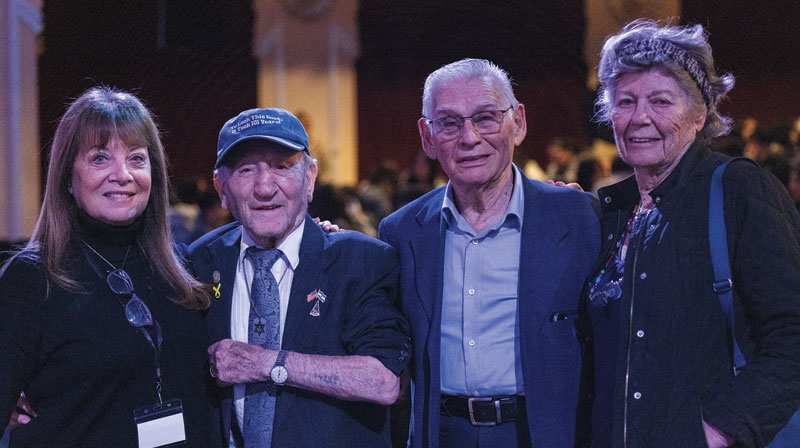In political campaigns, how and when a strategist chooses to spend money can mean the difference between winning and losing.
In the San Fernando Valley race this year between Congressional Representatives Howard Berman and Brad Sherman, the candidates’ campaigns spent astronomical sums — a combined $11.7 million, breaking the previous record for most spent by two Congressional candidates on a single campaign in California, with an additional $4.5 million spent by outside groups.
Sherman chief strategist Parke Skelton believes the 20-point drubbing his candidate delivered to the more senior Berman in November had been all but determined six months earlier.
Berman spent $3.5 million heading up to the June primary; Sherman, who had already represented most of the newly drawn district for a decade prior to redistricting, spent $2.2 million. Despite spending less, Sherman finished first in the primary, beating Berman by 10 points.
“They came out of the primary with $400,000; we came out with $3 million,” Skelton said. “At that point, I think the race was over. They were behind, and they couldn’t outspend us — and that’s generally a recipe for losing.”
Berman campaign manager Brandon Hall, who took over only after the primary, did not respond to requests for comment. In an article that appeared in the magazine Campaigns & Elections in November, he essentially agreed with Skelton’s assessment.
“I think there was a mistake made during the primary to spend too much money,” Hall told the magazine. “The campaign was a little bit careless with their money early on. [Berman] was raising a ton of money, but then he was spending money at too high a rate.”
Over the course of the two-round election cycle, Berman, Sherman and their respective allies together spent a total of $40.80 per registered voter in the district. Thanks to publicly disclosed spending reports, it’s possible to see exactly where all that money actually went — exactly which restaurants, office supply shops and campaign consultants the two sides used in their efforts to win re-election.
To reach voters these days, campaigns must use a variety of tactics, both old and new. They send people out to knock on voters’ doors, send numerous pieces of mail to their mailboxes and, of course, buy advertising in all manner of media, from cable TV to sites across the Internet.
According to documents obtained from the Federal Election Commission, Berman spent a little less than at least $1.1 million on direct mail to voters, while Sherman spent about $1.34 $1.9 million, sending 5.1 million individual pieces to voters over the course of teh campaign, according to Skelton. The two campaigns each utilized paid canvassers, but while Berman contracted with a few companies specializing in voter contact for which his campaign paid at least $750,000, Sherman’s spent less than half that amount, about $334,000.
“A canvass is the most effective form of communication,” said Eric Hacopian, who was hired by the Sherman campaign to do canvassing in advance of the primary. “It’s exceptionally expensive, but if I’m a smart person, I can be a helluva lot more convincing than 20 pieces of mail.”
The Sherman side kept its canvassing expenditure low, in part by bringing the entire operation in-house after the primary.
“It’s cheaper that way, and you can really monitor what you’re paying per contact,” Skelton said.
Hacopian said Sherman’s campaign, on the whole, was aimed to ensure Berman could not make inroads into the 60 percent of the new district that had been part of Sherman’s old one.
“They played masterful defense and they ran a very good campaign,” Hacopian said. “If Brad had run a poor campaign and Howard had run a better campaign, Brad still would’ve won; he just wouldn’t have won by this much.”
That’s not to say Berman didn’t try new things in his effort to pull off a win against Sherman, who started off with the twin advantages of being better funded and better known in the district.
Over the course of the long campaign, Berman’s side hired three different firms and individuals to manage its online communications and its presence on the Internet, spending more than $135,000 on Web development as well as on Facebook and Google ads.
Sherman’s campaign, meanwhile, spent a bit more on its Web-based effort, about $154,000.
That amounts to about 2 percent of the total spent by each campaign overall, numbers dwarfed by what was spent by the two sides for ad time on cable television. Sherman’s media buys cost more than $1.2 million; Berman spent about $2.3 across cable television, including ads on individual channels as well as on a satellite TV company’s airwaves.
Nevertheless, although online campaigning was a relatively small part of the Berman vs. Sherman race, both sides hired some of the most advanced firms — often based in Washington, D.C. — to help deliver their message over the Web.
Jim Walsh, co-founder of the online political advertising firm DSPolitical, said the growth of politicking online is changing how campaigns are run in much the same way as the rise of television did in the middle of the 20th century.
“As more and more eyes are DVR-ing through their TV ads and are not even watching live TV anymore, more and more people are getting their content on the Internet,” said Walsh, whose firm was hired by Sherman to get out his message across the Web. The advertising — including political advertising — has already begun to follow the viewers.
Brian Ross Adams ran Richard Bloom’s successful campaign for California State Assembly, and he chalks up that win, in part, to his use of social media and leveraging online advertising.
Adams said he always responded directly to questions and comments on social media.
“That’s No. 1,” Adams said. “You’ve got to take the time to reply.”
As for online advertisements, data shows people don’t click on ads very often, so Adams chose images that convey a simple message — including for readers of online publications about Jewish life in Los Angeles, such as the this publication’s Web site, jewishjournal.com.
“The last weeks [before Election Day], we were running pictures of Richard, his wife and his dog,” Adams said.
Did it work? Bloom got elected — but that doesn’t mean there’s consensus that the online strategy made the difference.
Sherman adviser Skelton also ran the campaign for then-incumbent Assemblywoman Betsy Butler, who lost to Bloom by less than 1 percentage point; he felt that the negative mail sent by outside groups backing Butler were what pushed Bloom’s candidacy.
“What do you think did more, some online advertising by Bloom?” Skelton asked. “Or agribusinesses spending a couple hundred thousand dollars beating up on Betsy?”






















 More news and opinions than at a Shabbat dinner, right in your inbox.
More news and opinions than at a Shabbat dinner, right in your inbox.